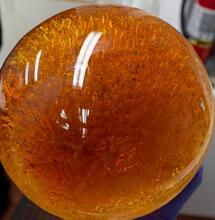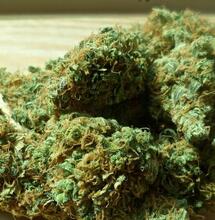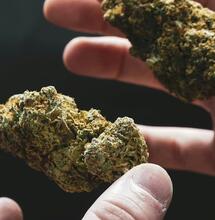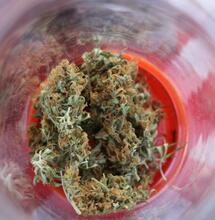Vaping vs. Smoking Joints: Which Gets You Stronger High?

If this was on the list of your cannabis dilemmas, worry no more. The scientists have already worked out the answer. In 2018, researchers with the renowned Johns Hopkins University School of Medicine tested extensively to see whether you get the same high from vaping cannabis and smoking flower. They tested in six 8.5-hour sessions with three different amounts of THC. Must have felt great to be part of such a study.
How do you tell if vaping or smoking gets you more high? When you are on the go with weed, and especially when consuming extra potent strains or products, it’s fairly difficult to tell the difference. Things can get really hazy and blurry and forgetful, but hey, that’s why we have science. A few years back, seventeen lucky participants were chosen to blow themselves to death as part of a research project at the Johns Hopkins Behavioral Pharmacology Research Unit in Baltimore, U.S. The participants had some previous experience with weed, though they were not allowed to smoke or take it in any other form 30 days prior to the project.
Participants Tried Vapes and Joints with Three Different Doses of THC
The study engaged its chosen 17 participants (9 men and 8 women) six times in total, with each smoking session lasting about 8.5 hours, or an entire work shift. The median age of the participants was 27.3.
Through each session, participants smoked or vaporized a dose of cannabis containing 0 mg, 10 mg or 25 mg of THC. Eventually, everyone smoked and vaped all three amounts during the six meetings, but they were never informed on how much THC they were hitting during a smoke session or whether they were in the placebo group. Then they were asked to fill in a drug-impairment questionnaire, which assessed the effects of the product they took.
Surely, the 17 THC guinea pigs were asked to do more than just taking a drug quiz. During each high, they were also required to complete a series of cognitive and psychomotor function tests, as well as their vitals were carefully observed the entire time. For example, everyone had their blood pressure and heart rate measured no less than 10 times during each session. In between, participants had to perform computer tasks, solve simple math equations, so on and so forth.
And What Were the Results?
Well, it has been conclusively established that the two methods of THC delivery are not equal. After everything was tested and checked, scientists could clearly see that both joints and vaporizers can bring out a strong high, with a bunch of effects expected from THC. However, vaporizing cannabis indeed came with a much more significant punch than smoked flower.
“The magnitude of changes observed for most drug effects were qualitatively larger when cannabis was vaporized, compared with smoked, and drug effects were mostly dose orderly,” the researchers wrote.
For example, a dose of 25 milligrams of vaporized THC can get you much more paranoid than a 25-mg smoked dose. Vomiting and experiencing hallucinations, although rare, were also reported among the negative side effects from consuming the biggest dose. Overall, the effects of feeling high from that dose would not diminish even after 6 hours.
In both groups, most of the drug effects, including rapid heart rate, itchy eyes, anxiety or getting the munchies, peaked during the first hour of intoxication. Sometimes these issues did not return to normal for more than 8 hours, and often the effects persisted for hours after blood THC levels stabilized.

What Explains the Difference Between Vaping and Smoking?
The culprit why smoking flower (as in joints and pre-rolls) delivers ‘less’ high is because of burning at a very high temperature. Vaporizing works at a much lower or so to say ‘ideal’ temperature - optimal for cannabinoids to do their best job. While with joints, cannabinoids burn somewhat uselessly and a lot of the THC is lost as a result of pyrolysis (combustion) and/or sidestream smoke, as noted also by the Johns Hopkins researchers.
When vaporizing, the maximum THC from the marijuana is used and can be inhaled. At both high and low doses, vaping produced significantly higher concentrations of THC in the participants’ blood, compared to smoked marijuana.
Subsequently, the vaporizers in the study sessions made roughly twice as many mistakes on cognitive tests, and experienced more of the unwanted side effects such as burning eyes or paranoid thoughts.
Even Small Amounts of Weed Deliver a Kick
What this research tries to say is that vaping can make you really really high. What’s more, the doses used for the study are not as strong as what can be found on the market.
“Notably, the highest dose of cannabis administered in this study (25 mg of THC: 0.19 g; 13.4% THC) is substantially smaller and has a lower THC concentration than what is typically contained in prerolled cannabis cigarettes available for purchase in cannabis dispensaries, which commonly contain 1.0 g of cannabis with THC concentrations often exceeding 18%,” the Johns Hopkins researchers noted.
What to make of this research? For beginners, it’s important to know and be aware that even a small dose of marijuana can deliver a strong effect, which can impact both your locomotor functions and cognitive capacity. The effects would be much more pronounced if you are not a daily user, and especially if you use a vaporizer. For the experienced, don’t underestimate yourself.
This quite unique study was funded by the Substance Abuse and Mental Health Services Administration (SAMHSA). The scientists published their findings in November, 2018, in the journal Jama Network Open, under the title “Acute Effects of Smoked and Vaporized Cannabis in Healthy Adults Who Infrequently Use Cannabis.”
Also read on Soft Secrets:









